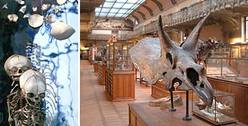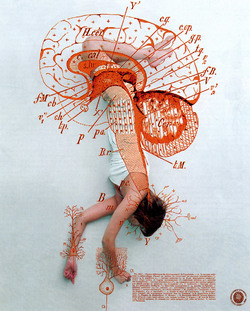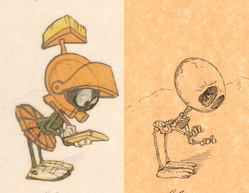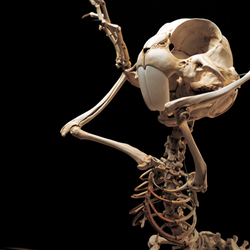
Color me morbid, but I’ve got this minor fascination with the visual trappings of 19th-century anatomical science. I love the Edward Gorey-esque quality of the period’s scientific drawings and its fastidious attempts to rebuild fantastic creatures from enormous piles of fossilized bones and resin.
And so I’m naturally a fan of the Galeries de Paléontologie et d’Anatomie Comparée in Paris. An outpost of the sprawling Museum National Histoire Naturelle, this museum of comparative anatomy is like a museum of a museum. Created at the end of the 19th century, it’s changed little in the last 100 years, with the very same hand-written placards still describing its displays as they did a century ago.

When you walk through the gallery’s front doors, you’re confronted by a herd of skeletons—animals, dinosaurs, mammoths, humans. It’s a creepy place, the gothic front office of a mad scientist, complete with a kind of freak show of anatomical oddities in the far back corner (two-headed kitten skeletons, etc).
Seems I’m not the only one who digs the eerie visual quality of this world. I’ve lately spotted some creative and fun design work inspired by natural history themes.
Le Monde’s weekend magazine last week included illustrations by French artist Chloé Tallot to accompany an article about diets that improve brain function. (FYI, you’re all set if you eat red meat three times a week, drink lots of wine every day, and enjoy some blood sausage twice a month.) Tallot’s images are built around drawings from the Museum National Histoire Naturelle, including diagrams of the brain and oddly endearing neurons.

And Andy Baio recently blogged about a pair of related and darkly fascinating works by contemporary artists Michael Paulus and Hyunkgoo Lee:
Skeletal Systems by artist Michael Paulus peels away popular cartoon characters to show what their skeletons might look like. The enormous eyeballs and tiny bodies of the Powerpuff Girls get extended treatment, but I think I’m most partial to Marvin the Martian.
And in a riff on the same concept, artist Hyungkoo Lee’s Animatus takes the cartoon schtick a step further and creates actual resin models of the skeletons. Their creepiness seems totally appropriate to the anatomical oddities section of the Galerie d’Anatomie Comparée.

For my part, I don’t think I’ve quite got it in me to do design work that’s quite so dark as what these artists have mustered. But I’ve been known to source images for web designs from historic maps and diagrams. Well out of copyright, the following collections are not only fascinating to browse but provide some great grist for natural-history design themes:
Dream Anatomy by the National Institutes of Health
Historical Anatomies on the Web also by the National Institutes of Health
Historic plant images 1885–1900. Stunning high-res images of German plant drawings from the late 19th century.
De Humani Corporis Fabrica by Andreas Vesalius. A website from Northwestern University detailing the 16th century book of anatomy. Click “Images.”





